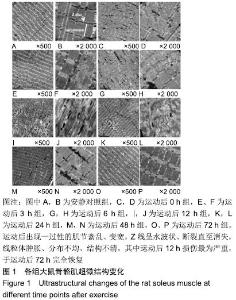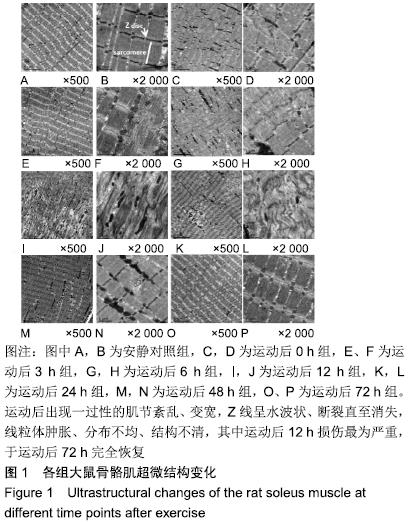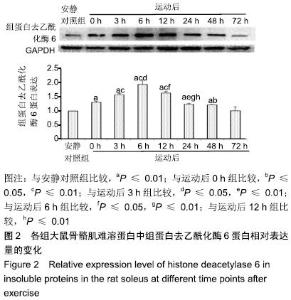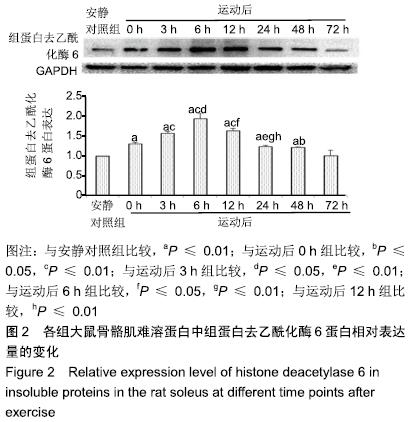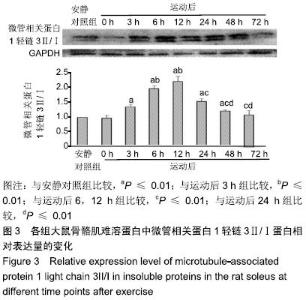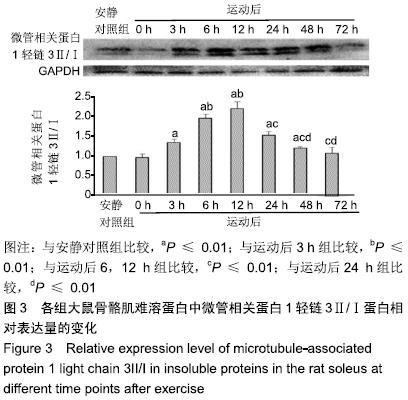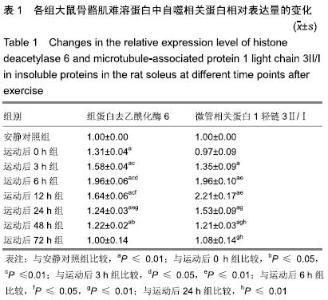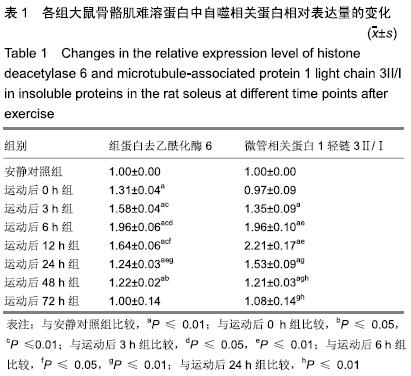[1] OWENS DJ, TWIST C, COBLEY JN, et al.Exercise-induced muscle damage: What is it, what causes it and what are the nutritional solutions? Eur J Sport Sci.2019;19(1):71-85.
[2] HOTFIEL T, MAYER I, HUETTEL M, et al.Accelerating Recovery from Exercise-Induced Muscle Injuries in Triathletes: Considerations for Olympic Distance Races.Sports (Basel). 2019;7(6).pii: E143.doi:10.3390/sports7060143.
[3] 王瑞元,周越.骨骼肌与运动[M].北京:人民体育出版社,2013:1-19.
[4] HODY S, CROISIER JL, BURY T, et al.Eccentric Muscle Contractions: Risks and Benefits. Front Physiol.2019;10:536.
[5] 王瑞元.一次力竭性离心运动后大鼠骨骼肌α-actin代谢、α-actin和MHC基因表达及针刺对其影响[D].北京:北京体育大学,2000.
[6] 周越.离心运动对骨骼肌细胞膜骨架蛋白含量影响的研究[D].北京:北京体育大学,2005.
[7] 徐玉明.低氧低氧运动对骨骼肌Dystrophin、Desmin的影响[D].北京:北京体育大学,2007.
[8] 李俊平.低氧、低氧运动对骨骼肌Titin和Nebulin的影响机理[D].北京:北京体育大学,2007.
[9] 丁海丽,孙竹昕,王海牛,等.大负荷运动及针刺干预对大鼠骨骼肌内质网应激钙信号的影响[J].北京体育大学学报, 2017,40(11):49-55.
[10] BARREIRO E, SALAZAR-DEGRACIA A, SANCHO-MUNOZ A, et al.Endoplasmic reticulum stress and unfolded protein response in diaphragm muscle dysfunction of patients with stable chronic obstructive pulmonary disease.J Appl Physiol(1985).2019;126(6): 1572-1586.
[11] JENA KK, MEHTO S, KOLAPALLI SP, et al.TRIM16 employs NRF2, ubiquitin system and aggrephagy for safe disposal of stress-induced misfolded proteins.Cell Stress.2018;2(12): 365-367.
[12] ZHENG H, YUAN C, ZHANG H, et al.The tissue- and developmental stage-specific involvement of autophagy genes in aggrephagy.Autophagy.2019:1-11.
[13] SUN D, WU R, LI P, et al.Phase Separation in Regulation of Aggrephagy.J Mol Biol.2019.pii: S0022-2836(19)30415-2. doi: 10.1016/j.jmb.2019.06.026. [Epub ahead of print]
[14] HYTTINEN JM, AMADIO M, VIIRI J, et al.Clearance of misfolded and aggregated proteins by aggrephagy and implications for aggregation diseases.Ageing Res Rev.2014;18:16-28.
[15] YOON SH, CHUNG T.Protein and RNA Quality Control by Autophagy in Plant Cells.Mol Cells.2019;42(4):285-291.
[16] 高前进.骨骼肌热休克蛋白保护作用及机制研究[D].北京:北京体育大学,2006.
[17] 朱荣.运动对骨骼肌泛素蛋白酶体途径活性的影响及机制[D].北京:北京体育大学,2009.
[18] RYHANEN T, VIIRI J, HYTTINEN JM, et al.Influence of Hsp90 and HDAC inhibition and tubulin acetylation on perinuclear protein aggregation in human retinal pigment epithelial cells.J Biomed Biotechnol.2011;2011:798052.
[19] HANSON K, TIAN N, VICKERS JC, et al.The HDAC6 Inhibitor Trichostatin A Acetylates Microtubules and Protects Axons From Excitotoxin-Induced Degeneration in a Compartmented Culture Model.Front Neurosci.2018;12:872.
[20] KOUTAKIS P, MISERLIS D, MYERS SA, et al.Abnormal accumulation of desmin in gastrocnemius myofibers of patients with peripheral artery disease: associations with altered myofiber morphology and density, mitochondrial dysfunction and impaired limb function.J Histochem Cytochem.2015;63(4):256-269.
[21] MCKENZIE EC, EYRICH LV, PAYTON ME, et al.Clinical, histopathological and metabolic responses following exercise in Arabian horses with a history of exertional rhabdomyolysis.Vet J.2016;216:196-201.
[22] ARMSTRONG RB, OGILVIE RW, SCHWANE JA.Eccentric exercise-induced injury to rat skeletal muscle.J Appl Physiol Respir Environ Exerc Physiol.1983;54(1):80-93.
[23] CAI S, ZHONG Y, LI Y, et al.Blockade of the formation of insoluble ubiquitinated protein aggregates by EGCG3"Me in the alloxan-induced diabetic kidney.PLoS One.2013;8(9): e75687.
[24] JOHNSTON JA, WARD CL, KOPITO RR.Aggresomes: a cellular response to misfolded proteins.J Cell Biol.1998;143(7): 1883-1898.
[25] SHANG H, XIA Z, BAI S, et al.Downhill Running Acutely Elicits Mitophagy in Rat Soleus Muscle.Med Sci Sports Exerc.2019;51(7): 1396-1403.
[26] FRIDEN J, SJOSTROM M, EKBLOM B.Myofibrillar damage following intense eccentric exercise in man.Int J Sports Med. 1983;4(3):170-176.
[27] FRIDEN J, LIEBER RL.Eccentric exercise-induced injuries to contractile and cytoskeletal muscle fibre components.Acta Physiol Scand.2001;171(3):321-326.
[28] SANCHEZ AM, BERNARDI H, PY G, et al.Autophagy is essential to support skeletal muscle plasticity in response to endurance exercise.Am J Physiol Regul Integr Comp Physiol.2014;307(8): 956-969.
[29] NEEL BA, LIN Y, PESSIN JE.Skeletal muscle autophagy: a new metabolic regulator.Trends Endocrinol Metab.2013;24(12): 635-643.
[30] LAMARK T, JOHANSEN T.Aggrephagy: selective disposal of protein aggregates by macroautophagy.Int J Cell Biol.2012;2012: 736905.
[31] 李文娟.Nrf2激动剂通过促进自噬对泛素化蛋白聚合物的清除保护氧化应激诱导的胰岛β细胞损伤的作用及机制[D].济南:山东大学, 2014.
[32] LEE JY, KOGA H, KAWAGUCHI Y, et al.HDAC6 controls autophagosome maturation essential for ubiquitin-selective quality-control autophagy.EMBO J.2010;29(5):969-980.
[33] KAWAGUCHI Y, KOVACS JJ, MCLAURIN A, et al.The deacetylase HDAC6 regulates aggresome formation and cell viability in response to misfolded protein stress.Cell.2003;115(6): 727-738.
[34] OLZMANN JA, LI L, CHUDAEV MV, et al.Parkin-mediated K63-linked polyubiquitination targets misfolded DJ-1 to aggresomes via binding to HDAC6.J Cell Biol. 2007;178(6): 1025-1038.
[35] 尚画雨,张荷,夏志,等.PINK1/Parkin介导的线粒体自噬在运动性骨骼肌损伤中的作用[J].上海体育学院学报, 2018;42(3):103-110.
|
